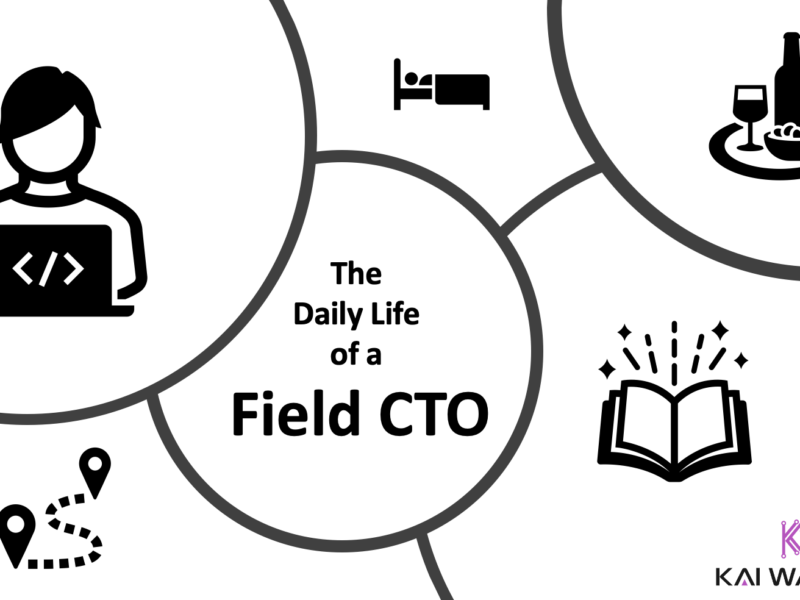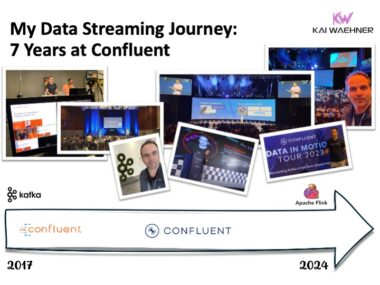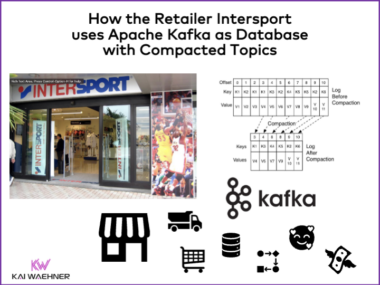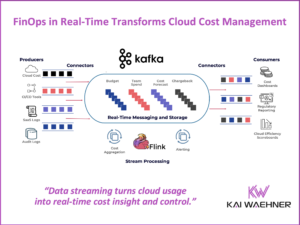Field CTO is a job role that comes up more and more in software companies. There is no standard definition for this job role. As I regularly get the question about what a Field CTO does, this blog post summarizes a few general characteristics and then explores my daily life as a Field CTO. The post concludes with the answer to how you can also become a Field CTO at a software company in your career.
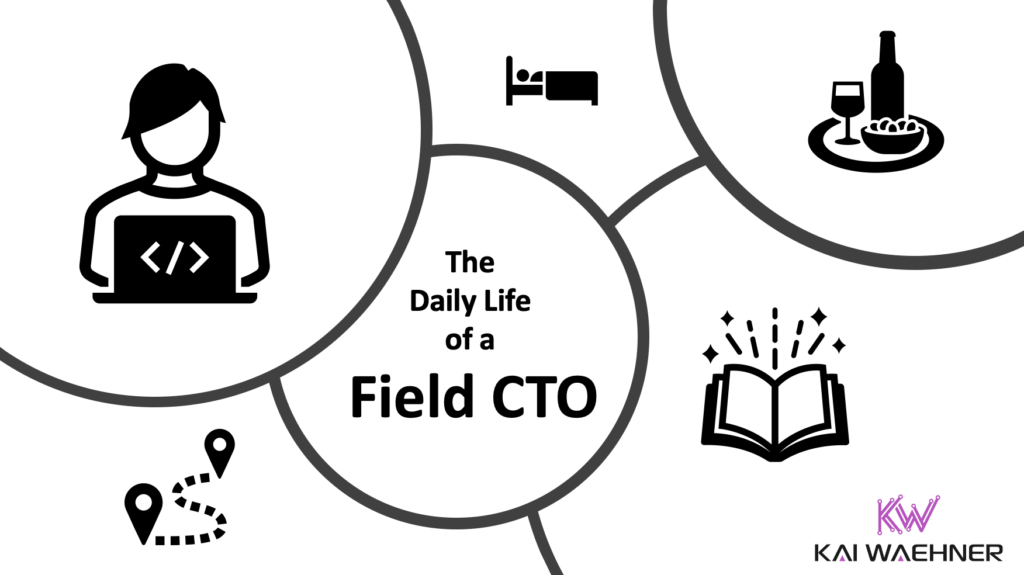
General characteristics of a Field CTO
Search through business and employment-focused social media platforms like LinkedIn or jobs networks and portals like Indeed or Glassdoor. You will see many of the following characteristics, experiences, and tasks of most people that own a position as Field CTO:
- Meet many stakeholders across entire customer projects and sales lifecycles: Work with prospects/customers and partners (like cloud service providers, other software vendors, and system integrators) to ensure customer success. This includes joint planning of customer projects, a strategic roadmap for the enterprise architecture, or technical partnerships.
- Talk business and tech in the same meeting: Explain the product portfolio and business value of your solution on all levels, including business executives, tech executives, and whole project teams with project leads, architects, engineers, and business people.
- Evangelize the product portfolio and success stories: Perform internal and external events and create public content about case studies, technical architectures, and the business value of your solution mapped to industry and business problems. Events include webinars, business roundtables, tech meetups, and international conference talks. Content creation covers podcast interviews, blog posts, slide decks, and articles in magazines/electric journals.
- Collaborate with product and field marketing: Close to evangelism, but often independent, work with the internal marketing to support product announcements, regional road shows, global webinars, customer case studies, and other marketing initiatives to generate product/vendor awareness and sales pipeline.
- Be a public spokesperson: Present the employer in public relations. This differs from evangelism, as it is much more strict, dangerous, and sensitive. The key partners are the media/press holding interviews and research analysts (like Gartner and Forrester) getting educated about the product portfolio and case studies.
- Collaborate with product and engineering: Provide feedback from the meetings and public events to product management and engineering teams, like new feature requirements. And the other way, present the roadmap and strategic decisions to customers.
This was the general summary. In the following sections, I will go into more detail about my individual daily life as a Field CTO.
My regular personal tasks as Field CTO
In my world, everything is around open source, cloud, data streaming, analytics, and big data. My current employer Confluent provides a complete data streaming solution that can be deployed everywhere with a cloud-native product portfolio.
Let’s look at my recurring daily, weekly, or monthly tasks. The mix of all the following functions makes the difference. I might not be a complete expert in any of these categories. But I can leverage and combine my knowledge and experiences across different aspects. Each section shows a few references, so you get a feeling about my work in the different areas.
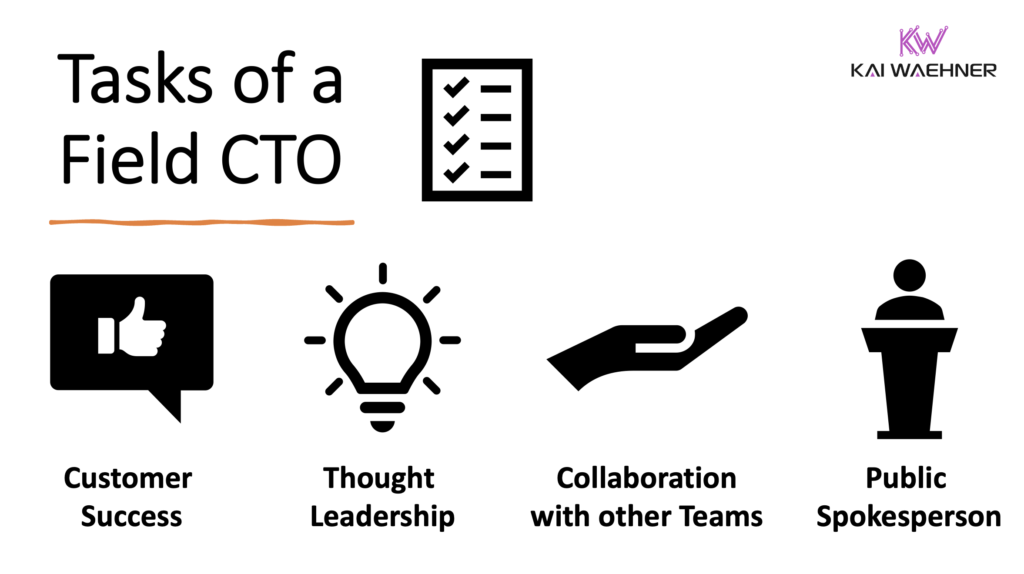
Task 1 – Support the success of our customers
Customer success is a term software companies focus much more on compared to the last decades – even to the degree that whole departments are named after it. While it makes total sense to make and keep the customer happy, the cloud enforced this paradigm much more strictly as the financial success for the software vendors is based on continuous consumption of the cloud products instead of just selling perpetual software licenses. Customer success obviously increases the customers’ satisfaction while using a product or service. This results in decreased customer churn and increased up-sell opportunities.
Customer success is a company effort from the CEO down to the account team. You work with strategic customers on every level, including top management, decision-makers, project leads, architects, developers, etc.
Here are a few things I do to support a great relationship and the success of our strategic customers.
Share technical architectures mapped to real-world experiences
I map my experience from what I see at customers across industries with relevant technologies. In my case, I have worked in the data integration and analytics space since I wrote my degree dissertation at the university many years ago about middleware, service-oriented architecture (SOA), and enterprise service bus architectures.
Today, working for the data streaming vendor Confluent, I focus on open-source technologies and cloud services around Apache Kafka. A Field CTO is not necessarily a deep technical expert like the consultants or support engineers. Still, the Field CTO understands the technology and how it complements or competes with other technologies.
I can explain design principles for distributed computing architectures, hybrid cloud deployments, cloud-native architectures, microservices, and data mesh. As Field CTO, I understand how data streaming helps to solve business problems using these architectures. Last but not least, and maybe most importantly, I educate how data streaming fits into the enterprise architecture with other technologies and products for middleware, data analytics, machine learning, the internet of things, blockchain, and so on.
Here is a concrete example where I map retail use cases for omnichannel communication focusing on use cases, not technology. Despite the technical content, this slide is also easily understood by the executives and business teams:
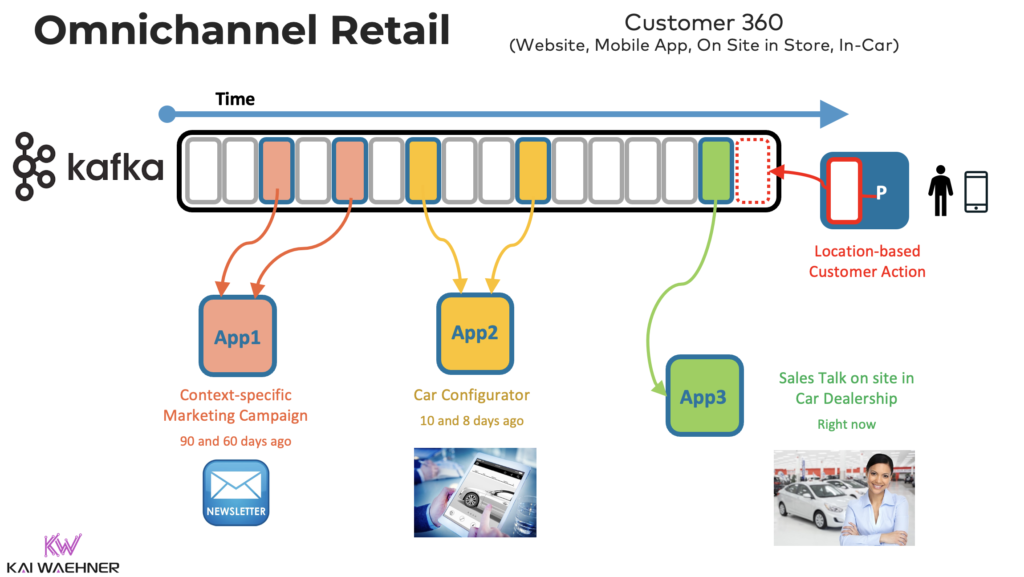
Some Field CTOs are very technical and collaborate a lot with engineering to add technical features or improve the performance of the product together with key customers. To be very clear: That’s not me. 🙂
Talk to executives and very technical people in the same room
A Field CTO can, and has to, talk at the right abstraction level. Contrary to many other colleagues involved in customer success, I do not focus on just selling our product or supporting the customer in production or implementing a new application. Instead, I discuss the value of our product portfolio for the next customer project or the strategic enterprise architecture. Hence, a few aspects are different in my meetings compared to my colleagues from presales, consulting, or support:
- I usually support the early stages of a customer project or sales cycle, where a decision needs to be made about the best architecture, technologies, and strategic planning.
- The starting project teams get support from me to spread the benefits of their strategic decision across their organization – the bigger the account, the more often this might need to happen.
- I need to speak the languages of executives and technical people in the same meeting room and confidently answer questions on all levels.
I interact with senior executives and technical experts within the Fortune and Global 2000, but also smaller enterprises and startups. The meetings are very different depending on the company size. An executive in a startup is often still the technical decision-maker. The mix of meetings with different kinds of companies is one of the most helpful aspects because one can learn from the other. Think about a traditional bank and a FinTech startup. The Field CTO helps connect the dots and educates companies on how others solve business problems and innovate.
Share industry expertise to talk at the right level
No matter what company size, the key challenge is usually the same (and that’s what most people struggle with): Talk at the right level. For instance, don’t discuss technical details if you talk to a CIO. Don’t even talk about the product or technology. A CIO needs to solve business problems and buys any product that helps. In my case, the CIO rarely cares if the problem is solved with Apache Kafka or any other technology.
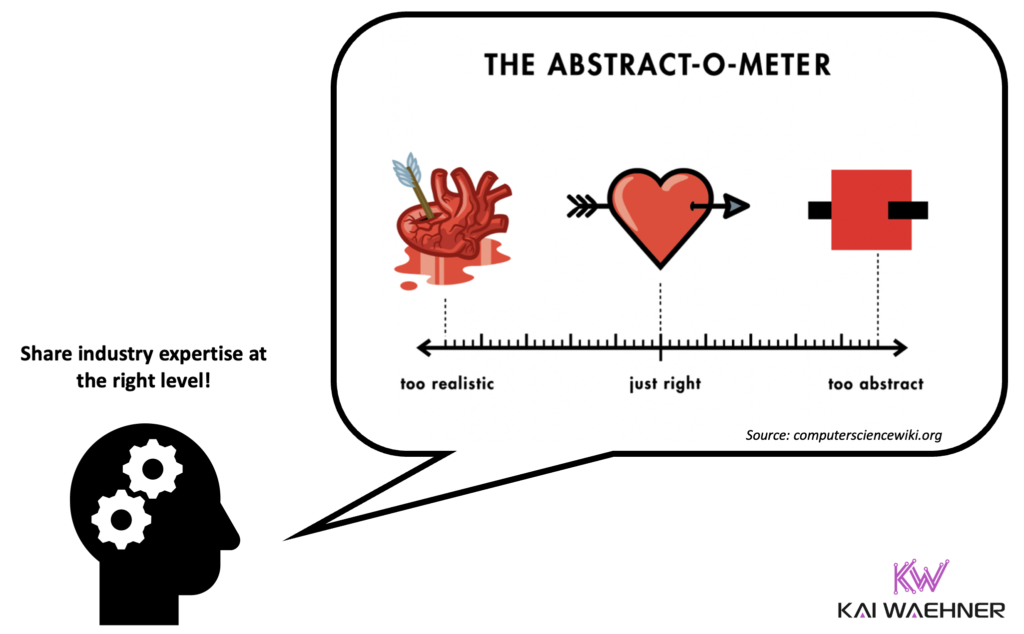
So, how do you talk at the right level?
The answer is simple and complicated: start with case studies. Show knowledge of the customer’s industry. Speak to customers in a language they understand. The conversations begin well if you explore a success story from another public customer in the same industry. You can go down to technologies and architectures as much as needed (or skip it if you talk to an executive or business person). For instance, if the developers ask how transactional workloads are implemented with data streaming, I go down to the API level and explain the concepts and functions of Apache Kafka’s exactly-once semantics.
Represent headquarters in other time zones
Here is one of the biggest problems of most software companies that originate in Silicon Valley: Time zones. Actually, every startup begins with this problem, no matter if you create an innovative business model in a tech hub like Tel Aviv, Berlin, or Bangalore.
I am used to working for companies that emerged in Silicon Valley. The time zone is nine hours behind my home in Germany. The Middle East, Asia, and Australia struggle even more. Sales, marketing, consulting, and support need to be regional. A software company cannot grow successfully otherwise.
But what about top management, field leadership, and product management? Correct. Most of these colleagues often live close to the Pacific time zone. That’s where Silicon Valley is. Otherwise, alignment in creating strategies, making decisions, and coordinating the worldwide business is much more complex.
A regional Field CTO is especially helpful in regions outside the headquarters’ time zone. So, even if the most significant piece of revenue comes out of the US, you might find one Field CTO for the US, one for EMEA, and one for APAC in the company. Why? Because the Field CTO in other time zones takes over some tasks of headquarters.
Present and discuss the company vision and roadmap
One of the most common inquiries I get, especially when traveling outside the US, is doing roadmap presentations about the company’s vision and strategy (under NDA, hence not in public events) because product management sleeps while I visit the customer.
But there is more than roadmap discussions. The reality is that digital innovation usually happens first in a few countries, like the US or Mainland China. Other countries learn and repeat. The Field CTO sees innovative and successful trends and shares the news with different time zones.
Two examples:
- Technical example – cloud infrastructure: Some countries are just moving to the cloud. For instance, when I visited the Middle East a few times in 2022, the significant discussions were still about the availability of cloud providers like AWS or Azure in countries like Qatar or Saudi. Hence, these countries are forced to be years behind the US or many European countries.
- Business example – live commerce (aka social commerce): It has been a very common business model in retail in Asia for several years already. This sales innovation combines instant purchasing of a featured product and audience participation via social networks. It still surprised customers in the US and Europe when I present how Apache Kafka transforms the retail and shopping industry with live commerce.
Task 2 – Thought leadership
A thought leader is a known expert in a specific field. In my case, I have worked in the data integration and analytics space for many years. The topics and technologies change over time. In my early career, I focused on service-oriented architectures using Enterprise Service Bus (ESB) technologies and Batch ETL tools. Today, I focus on data streaming with technologies like Apache Kafka or Apache Flink and design principles like microservices and data mesh.
But since the start of my career, I have documented the integration and data space evolution with public presentations, blog posts, and articles. I share my experiences with case studies, best practices, anti-patterns, and trends. Thought leadership means sharing experiences and educating others. There is disagreement, too. That’s fine and part of why the software industry is so exciting. Evolution and innovation never stop.
Trustworthy consulting for customers, partners, and community
Sales and marketing are crucial for the success of every software company. Each business unit has its own goals, like reaching revenue goals or creating lead generation and revenue pipeline. These goals sometimes conflict with focusing on the big picture of the customer and its enterprise architecture. Every software company puts itself in the middle.
You won’t imagine how many vendors I have seen in the integration and analytics space pitching themselves as the heart of the customer’s enterprise architecture.
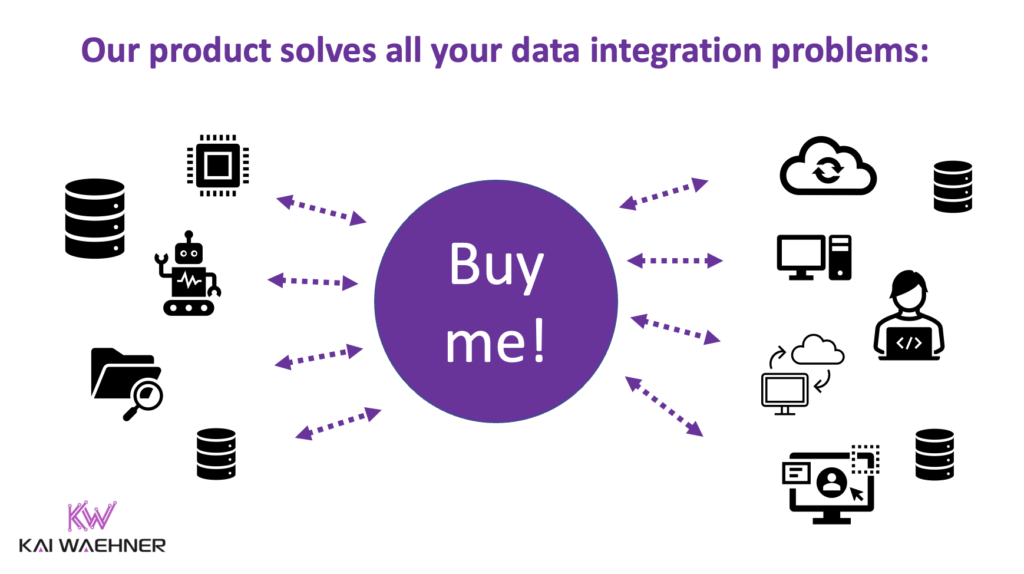
Every company has plenty of other vendor agreements. Not everyone can be at the heart of the enterprise architecture. I always recommend using the right tool for the job. It is typically not sales or marketing that solve this conflict. It is not their task either. Independent consultants and system integrators help fix this mess. From the software vendor side, the Field CTO is a trustworthy person explaining when to use the own product portfolio and how to complement other technologies in the enterprise architecture.
The beauty of open source is that you can help your colleagues and the broader community simultaneously with thought leadership. In the end, it is a win-win situation. You won’t imagine how often I come into a meeting anywhere in the world, and a few people in the room from the customer already know me before I introduce myself.
I articulate when and when not to use our products. Sometimes, sales reps in a customer meeting might go a little crazy inside when I present when NOT to use Apache Kafka. A Field CTO is a trustworthy advisor.
Present industry trends mapped to the product portfolio
I learn daily about new use cases, technologies, and other trends across industries. Without up-to-date industry knowledge, it is impossible to be a trusted advisor to customers, partners, and the broader community. I spend at least an hour every single day educating myself. The focus here is not technology but industry developments. Podcasts are your best friend when traveling or just taking a break from work and going for a walk or run.
As Field CTO, I remain current on industry trends and act as an industry thought leader and trusted advisor in internal discussions, customer meetings, and public events. Deliver tangible content (articles, whitepapers, slides, videos, demos, etc.) to be used by various business units like sales, presales, marketing, partner, product management, and others. But the content is NOT sales but trustworthy education for everyone. In my case, I get great feedback from colleagues, partners, customers, researchers, students, and competitors (!) about how my thought leadership helps to define the proper enterprise architectures and solve business problems.
My presentation about use cases and architectures for data streaming across industries is a great example focusing on case studies, not the underlying technologies and products:
Click on the button to load the content from www.slideshare.net.
A Field CTO confidently presents in front of audiences of all sizes (from 1 to 1000 and more people) to communicate the value proposition of strategic and tactical concepts and architectures for complex enterprise use cases.
This happens in on-site and virtual events. I deliver virtual webinars, customer tech talks, on-site conference talks, keynotes, roundtables, and in-person panel discussions every month.
Nobody was born with the talent of speaking in public. Speaker training never hurt anyone. One should seek honest feedback on the presentation style regularly. Look at what kinds of international talks I give across the globe to get a better feeling for my public content.
Here is a picture where I speak at Big Data Spain in Madrid:
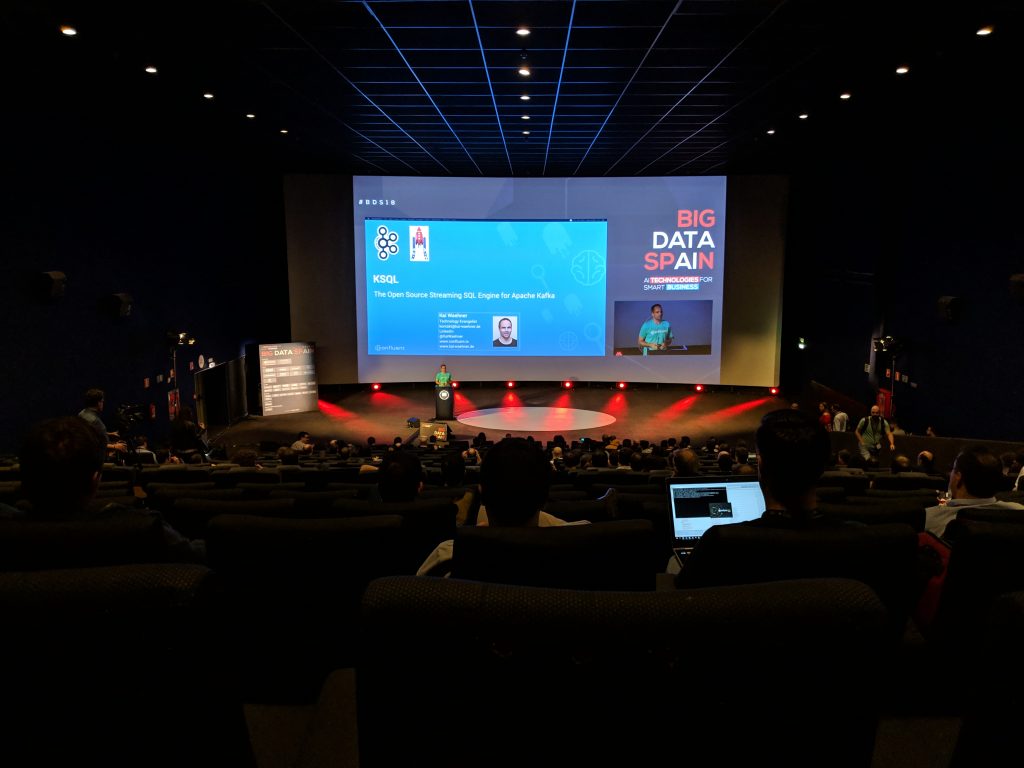
A Field CTO in a bigger company might focus solely on a single industry to go deep into conversations on all levels. I prefer another way. I am not a deep expert in one industry. Instead, I can share case studies and architectures across all major industries.
Customer meetings at international conferences and regional events
Thought leadership is not just about writing blog posts and doing presentations.
I attend many public events every year around the world. This includes events organized by our company and external conferences. For instance, at Confluent, the most critical events are our yearly conferences in the US (Current, 2022 in Austin) and Europe (Kafka Summit, 2022 in London), plus regional events (Data in Motion tour around the world; I attended Frankfurt, Zurich, Stockholm, Amsterdam, Tel Aviv, and Dubai in 2022). I also participate in external events. One of my yearly favorites is AWS ReInvent in Las Vegas.
But I am not an attendee at all these events. I usually don’t have much time to attend sessions. Instead, I have customer meetings. Up to ten per day. It can become very stressful and exciting at the same time. Additionally, I usually give a talk or keynote and moderate a customer roundtable (often for executives).
Looking at my slide decks and blog posts, I have plenty of success stories and architectures I can discuss on every level, from the CIO to the software developer for financial services, insurance, retail, telcos, gaming, public sector, logistics, travel, energy, automotive, healthcare, and software industry.
I can adjust my content depending on the audience. For instance, if I speak at the yearly Automotive IT Congress in Berlin, I know the audience is top management from OEMs and suppliers. Hence, I present case studies about car makers, manufacturing, and mobility services. When I go to the Apache Kafka open source community meetup in Berlin in the evening, I speak about deep technical and non-industry specific general content like disaster recovery strategies for data streaming. And when we have a customer roundtable for lead architects, the conversation changes to a completely different story once again.
A Field CTO is not a developer advocate or evangelist
Note that the content of a Field CTO differs from developer advocates/technology evangelists. These colleagues focus on source code, live demos, deep technical Q&A, etc. Don’t get me wrong: Some developer advocates publish unique thought leadership content. And Field CTOs create code examples and demos. But the priority and focus are very different. The overlapping in the daily business is less than 10% in my experience.
The Field CTO understands the market and the business in depth. The focus is on customers’ problems and innovation. Mapping these challenges into the software vendor’s product portfolio is a key focus area. Contrarily, the developer advocate focus is using the product portfolio of the software vendor to create exceptional code examples/demos and shares the developer experience with the community (i.e., customers and potential customers) by doing blog posts, meetups, conference talks, podcasts, etc.
Having said all this, some content I create is comparable to presentations or blogs of developer advocates. For instance, I wrote a few quite technical articles on the Confluent blog. Hence, some people define Field CTO as a C-level developer advocate and evangelist.
The content of the Field CTO (similar to the content of the developer advocate) is not just helping the customers, partners, and the broader community. I also use it for internal enablement. I have a detailed explanation in the next section for this.
Task 3 – Collaborate with internal teams
A Field CTO is connected with colleagues across various departments within the company. And on all levels, from C-level to field teams to engineering.
Collaborate with product management and engineering
The Field CTO supports product management and engineering with feedback from customer conversations and shares the company’s strategy and vision with the customer.
Here are specific tasks I do regularly. I want to emphasize that I am not the lead or expert in any of these tasks. I add another perspective from my experience (that is different because of my daily job meetings customers, creating thought leadership content, etc.):
- Share feedback from the field: Feedback includes ideas, complaints, and trends that I hear in my 100+ customer meetings during the year across the globe. I do monthly 1:1s with a few product managers, plus many discussions whenever I meet product managers or engineers at internal or external events.
- Join subject matter expert (SME) groups: Dedicated groups with colleagues from all different business units meet weekly to discuss a specific topic. I join a few of these whenever I have time.
- Review internal and external documents: I look at internal documents like new product ideas, previews, or roadmap draft templates. I also collaborate with our marketing team when we create external-facing content like case studies or pitching decks.
- Analyze competitive intelligence: A dedicated group focuses on market intel. In the software industry, it is hard to be and stay successful if you don’t know what your competitors are doing. I share feedback with this group whenever something comes up in a customer meeting or at an event. I read our updated internal documents monthly to learn how to discuss our strategy and product in competitive situations.
- Present roadmap to customers and prospects: I discuss the company’s vision and upcoming features (under NDA) in customer meetings. This is crucial, especially outside the US, where it is much harder for the account teams to get an appointment with colleagues from the US time zone. I cannot go as deep as a product manager. I only share the high-level overview and involve the right product manager in a follow-up with the customer.
Internal enablement of sales and marketing
In a good company, even the account manager and presales colleagues clearly explain how the own product fits or does not fit into the enterprise architecture of the customer. No one lies and sells products where it is no fit. Though, often this is more of an educational problem. The Field CTO educates internal teams about practical DOs and DONTs.
In my case, data streaming is a super complex field. Hence, thought leadership is not just for customers. It is widely used by colleagues, too. For instance, my blog series about data streaming vs. data warehouse and data lake explores how and when data streaming complements other data platforms. Many new hires across business units read this to understand how we fit into the broader data platform market.
The Field CTO enables internal teams by demonstrating how to pitch their product’s business value and unique selling points. This is crucial for many departments, including sales and marketing. I work with our internal enablement team to incorporate and share my knowledge and experience with new hires. This is not replacing any other internal enablement, but is complementary. It adds another perspective.
Support mergers and acquisitions (M&A)
Mergers and acquisitions (M&A) allow enterprises to grow or add new products more quickly and change the nature of their business or competitive position.
A Field CTO helps evaluate other companies to guide the M&A team and top management in making the right decisions about buying or not buying the company. The feedback from the Field CTO is about market trends, visibility of the company in the customer base, feedback about the product experience, etc.
Task 4 – Public Spokesperson
I have covered thought leadership and evangelism already. However, being a public spokesperson is very different. A spokesperson is engaged or elected to speak on behalf of others. In the present media-sensitive world, software companies have limited employees who are allowed to speak to the media and analysts. First, you receive formal training in journalism, communications, public relations, and public affairs in this role to ensure that public announcements are made in the most appropriate fashion and through the most appropriate channels to maximize the impact of favorable messages and minimize the impact of unfavorable messages.
Being a spokesperson is much harder than doing thought leadership or technical evangelism. Hence, only the very experienced (and responsible) top management announces most critical messages, like the CEO and CFO doing the earning calls in a public company. A CTO or similar colleague announces new product releases. A Field CTO can work as a spokesperson to support:
- Public relations: Press articles, interviews, statements
- Analyst relations: Research interviews, presentation of product features and case studies
Give press interviews and write public articles
For public relations, the Field CTO can help significantly in markets outside headquarters. In my case, most interviews and press releases in English are done out of headquarters in Silicon Valley and supported by top management and regional colleagues. I mainly do interviews and press articles for regional events in Europe. The public relations team uses me a lot as a German spokesperson, as I am German. But I also do English press articles, interviews, and podcasts:
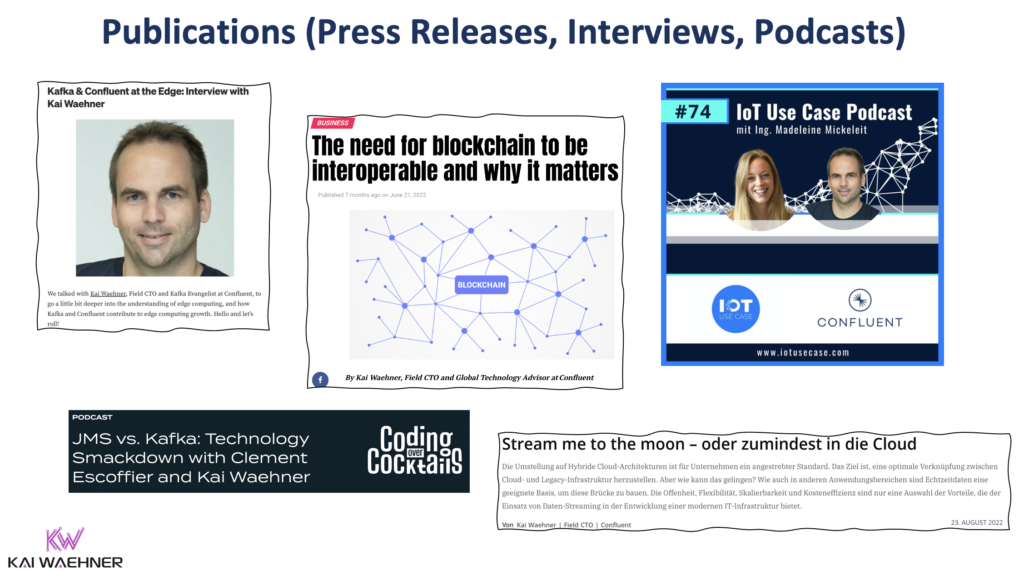
Contrary to regular blog posts or podcast recordings, the internal communications team reviews (and often even prepares). I collaborate and align with the team to ensure the proper positioning of our products and review the technical content. My broad experience working with so many customers always helps me find the right words, whether an article is for a developer interview or an interview in a CIO automotive magazine. I link my press publications on my website.
Educate research analysts like Gartner and Forrester
For analyst relations, it is different. While product management is crucial to present our product features and roadmap, I am involved in discussing case studies and industry-related trends. I have meetings and calls regularly with research analysts from Gartner, Forrester, IDG, and others to educate them and provide Q&A from my practical worldwide experience.
Working with analysts differs from daily meetings with customers or partners. These research companies don’t care only about the technology but about the success stories and the solved pain of customers. I guess everyone has seen a Gartner Magic Quadrant or Forrester Wave. People underestimate that these papers do not just evaluate the product portfolio but the vendor itself. The current product portfolio is essential, but the future product vision, continuous customer support of the vendor, and in the end, customer success and happiness are as necessary for the analysts.
In what business unit is a Field CTO?
That’s a brilliant question. There is no logical answer. I can only talk about myself. During most of my career, I was in “special groups” that have different quarterly goals (often hard to measure in $$$ and quota) and rules (like travel restrictions). My daily job is very flexible and differs every single week.
My priorities can change from quarter to quarter depending on new prioritization, regional re-organizations, changes in the competitive market, and so on. I love it. But it does not fit into a standard sales, marketing, or engineering job role (with all its processes and rules).
Most importantly: As Field CTO, I do not directly report to a sales or engineering manager. I work in a dedicated innovation group. That enables independent (but aligned) working on my tasks.
Other companies might put the Field CTO role into another business unit. It does not matter as long as you can fulfill your tasks the right way. But I could see conflicts if I directly report to a sales or marketing manager.
Why this job title?
The title Field CTO is coming up more and more in software companies. It is often used because some people in the company need a clear, visible description of their tasks. Many people use this term because there is no better one, and the role (maybe) did not exist in the past.
There are plenty of other job titles. Chief evangelist? Global technology advisor? Distinguished XYZ? I feel these titles make little sense and do not clearly say what I am doing. Hence, like data streaming or cloud-native data warehouses define new software categories, the job role of the Field CTO creates a new category. Let’s review this in 2, 5, and 10 years…
Is it a management role?
No. Field CTO is NOT a people management role. My management asked me tens of times if I wanted to get management responsibility and lead other colleagues. The clear answer was always a rapid “no!”…
I am very good at thought leadership in technology and innovation, creating public content, talking to different kinds of people in small and big audiences, and collaborating with customers and colleagues around the world. But I am not interested in managing other people. If you look at my long list of tasks, you quickly realize there is no time for this.
Where is the headcount on Indeed, Glassdoor, LinkedIn, etc.?
You often don’t find enterprises directly searching for this role. And frequently, it has a different name, as the title was just being created in the industry for a few years. There is no standard definition for a Field CTO like a sales rep, presales, field marketing, or software engineer.
Sometimes, the Field CTO is an informal role, not an official headcount. Your Workday might still say you are a distinguished software developer, principal presales, or similar. But you still use Field CTO in your internal and public profile.
Search for “Field CTO” in quotation marks (otherwise, you will only find CTOs – a very different and much more frequent job role). If you want to see a few other job descriptions and the career histories of Field CTOs, first check my Linkedin profile. Then search for “Field CTO”, and you will find several people from software companies. For instance, my search shows connections from Snowflake, Databricks, VMware, MuleSoft, Tableau, and others.
Field CTO is a new job role getting more and more traction.
Other Field CTOs in the software industry
This blog post is a story about my daily life as Field CTO. My personal definition of the job role of Field CTO in one sentence: The Field CTO is a trusted and well-known advisor for the product and technology my employer sells to make customers successful around the world.
As discussed in this blog post, the role is very individual and can look very different in other business units or organizations. Hence, I also want to share a few of my fellows from other software companies so that you see a few more examples that are similar and different at the same time:
- Daniel Hand, Field CTO APJ, Cloudera: ““. He is also a
- Fawad A. Qureshi, Global Industry Field CTO, Snowflake: Fawad is a strategic technology leader with more than two decades of international industry project experience involving consulting on enterprise data warehouses, big data analytics, and cloud solution architectures. He helps customers in multiple industries to translate their business requirements into technology solutions. He is passionate about sustainability and helps his clients achieve their sustainability goals using data and analytics.
- Jeroen Reizevoort, Field CTO EMEA, MuleSoft (Salesforce): Inspires customers by aligning their business initiatives to technology trends and helping them to make that combination actionable. “I am a technical executive responsible for communicating the corporate direction and product roadmap to regional customers’ business and technology leaders, as well as influencing the corporate and product strategy through industry expertise and synthesized field input.”
- Stephen Walters, Field CTO, GitLab: Works with customers on DevOps initiatives to the development lifecycle. He is an sAs a Field CTO, I am always looking at emergent areas of business and technology, a key area at the moment is value stream management.”
- Liz Fong-Jones, Field CTO, Honeycomb.io: Promoted from Principal Developer Advocate to the Field CTO role. She blends hands-on technical experience as a member of Honeycomb’s platform rotation, pairing with customers on implementation, and articulating the business value of observability to leadership and executives. She’s a frequent keynote speaker and author of Observability Engineering, published by O’Reilly Media.
How to become a Field CTO?
Many people ask me how they can get a job similar to mine. They see how many things I do, where I travel, and what lessons and case studies I share. That’s very exciting and attracts many people.
What previous job positions should you have had to become a Field CTO? A customer-facing role is critical. Ideally, you mix different experiences like developer relations, consulting, and technical sales (aka presales).
Here is how I would define the critical criteria for becoming a Field CTO:
- Talent: Mix of many things (tech and non-tech skills)
- Experience: At least 10+ years with different companies, technologies, industries, regions, etc.
- Curiosity: Learn something new every day across many (tech and non-tech) topics
- Travel: Meet customers/prospects/partners/community/colleagues everywhere in your region or even worldwide
Talent is likely the most challenging part, as you cannot learn everything. If you are unable (or don’t enjoy) speaking to different personas (like CIO, business person, developer), this job is impossible. You must also work with many people with very different opinions and fight against your thought leadership.
Experience is about broad knowledge across many topics. Technology is vital, but there is so much more. You must understand internal and external processes, sales cycles, cultures, regulations, etc.
Curiosity is mandatory, as you will (have to) learn new trends and innovations before most people even think about it. And compare and integrate it with existing technologies and platforms. It is not just about “why change” but an evolution of your customers, not a “big bang”.
Travel is the hardest part for many people. If you cannot travel regularly (at least in your region), forget it. Yes, things go virtual. But like many tasks of executives and top management, the functions of the Field CTO need interaction with humans. Meeting customers on-site in critical meetings or sharing case studies in roundtables only works well in person. And each region is different. Did covid change travel? No. Not for the role of the Field CTO. Instead, it showed me how important and valuable on-site meetings are.
Field CTO is a critical position in a software company
The broad spectrum of tasks allows a Field CTO to leverage the unique capabilities for internal and external thought leadership and knowledge sharing.
The success of the customers is the ultimate goal of every employee of a company. Collaboration with various internal teams, partners, customers, and the community is essential. The combination of continuous learning and knowledge transfer makes a good Field CTO. Curiosity combined with the human factor of 1-1 conversations in a variety of contexts is the secret sauce.
What are your tasks as a Field CTO? Or if you want to grow into that role, what is your current job role and strategy for the future? Let’s connect on LinkedIn and discuss it! Join the data streaming community and stay informed about new blog posts by subscribing to my newsletter.

